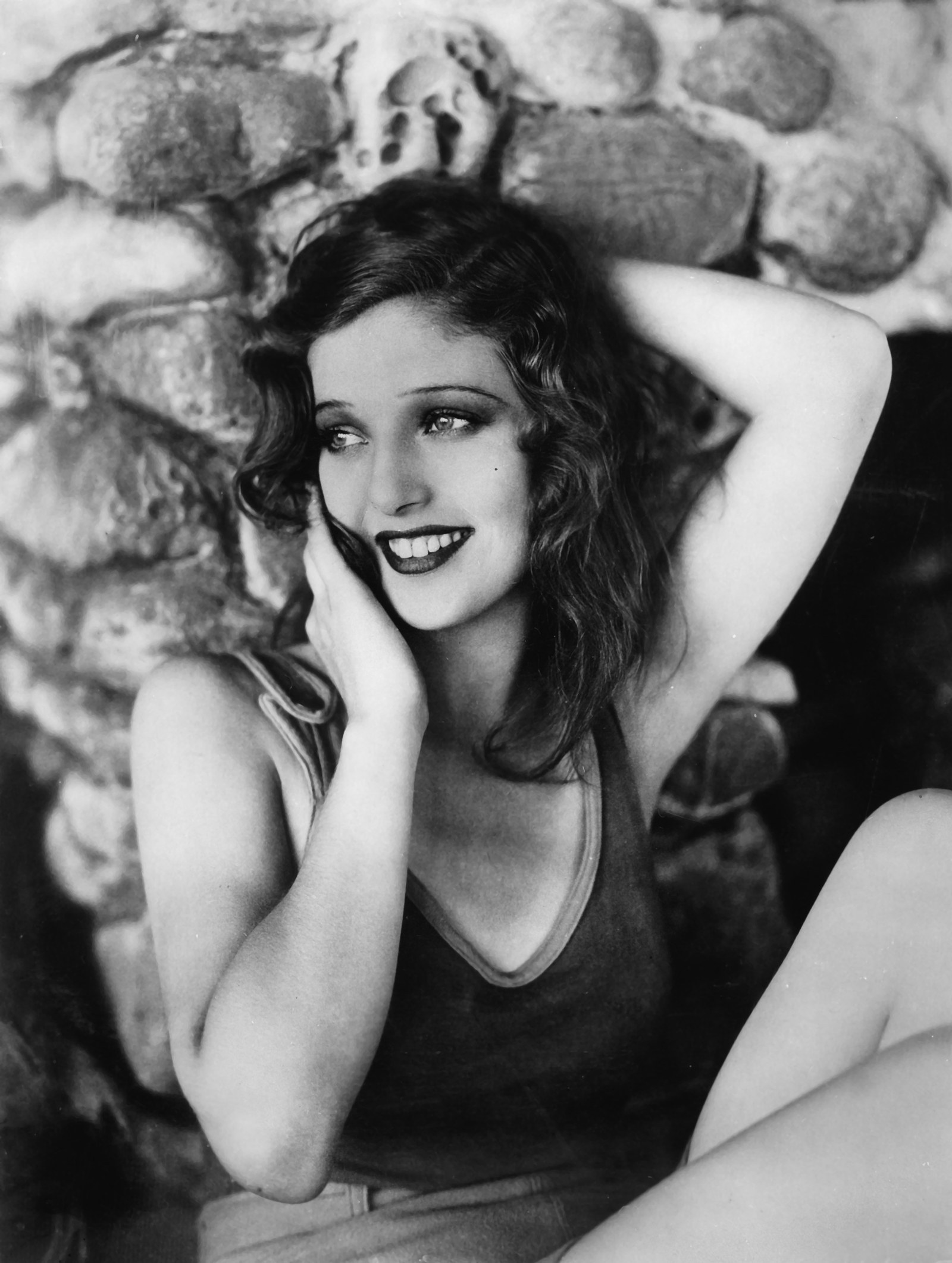It’s unclear what news story, exactly, made Loretta Young — one of the most beautiful and celebrated actresses of Classic Hollywood — first wonder if she had been date-raped by one of the biggest stars of all time.
It was 1998 and the 85-year-old Young was living a life of comfort and splendor in Palm Springs. At 80, she’d married French fashion designer Jean Louis; until his death in 1997, they had reveled in their collective fabulousness, drawing attention wherever they went, like an irresistible vortex of glamour.
At that point, Young was best remembered for The Loretta Young Show, a pioneering and massively successful program that had put her in American living rooms for the bulk of the '50s. But that had been Young’s second act. She’d first appeared onscreen in 1917, at the age of 3; by age 40, she’d appeared in over a hundred films. Even years out of the spotlight, her distinctive doe eyes and name would have been recognizable to anyone born before 1950.
Young was also known for her part in one of the biggest Hollywood cover-ups of all time: In 1935, at the age of 23, she became pregnant with Clark Gable’s child — while Gable was married to another woman. Over the course of the next two years, Young managed to hide the pregnancy, birth, and young infant for more than a year, eventually manufacturing an adoption narrative to bring her daughter home.
The story was successfully concealed from the public, even as it circulated around Hollywood, at a muted level, for years — Young herself didn’t confirm it until after her death, via her posthumously released memoirs, in 2000. The child wouldn’t learn of her parentage until just before her wedding, and Gable never acknowledged her as his own. Meanwhile, Young attempted to reconcile her image as devout and often openly moralizing Catholic, known for implementing a “swear jar” on set, with the persistent rumors of an extramarital affair. Over the course of her decades-long career, she was called a duplicitous liar, a fraud, a hypocrite.
Young loved to watch Larry King Live, which is most likely what prompted her to first ask her friend, frequent houseguest, and would-be biographer, Edward Funk, and then her daughter-in-law, Linda Lewis, to explain the term “date rape.” As Lewis recalled from her Jensen Beach, Florida, home this April, sitting next to her husband, Chris — Young’s second born — and flanked by Young’s Oscar and Golden Globe, it took a tact to explain, in language that an 85-year-old could understand, what “date rape” meant. “I did the best I could to make her understand,” Lewis said. “You have to remember, this was a very proper lady.”
When Lewis was finished describing the act, Young’s response was a revelation: “That’s what happened between me and Clark.”
After my extensive interviews with Young’s son, daughter-in-law, and longtime biographer, it seems clear to me that by keeping the secret of her daughter’s conception, Young was doing what millions of women have done before and since: using what little power she had to take back control of her life after it had been wrested from her.
But to understand this story — and why Young kept quiet for so long — one has to understand not only how women were made to understand their role in unwanted sexual advances, but also the expectations that governed Hollywood in the 1930s, and the well-honed studio system that ensured, at all costs, that stars hewed to them. But you also have to understand who Gable and Young were — what their larger-than-life images stood for, and all they stood to lose if the truth were revealed.
This is a story about the past, of course, but one with chilling echoes in the present: in the ever-accumulating allegations against Bill Cosby, or this week’s revelations about the rape of a 16-year-old member of The Runaways in 1976. It’s easy to look at Young’s elaborate cover-up and label it ridiculous. It’s harder to see what happened to her as indicative of larger structures of power — patriarchy, of course, but also Hollywood — that continue to make it so difficult for these stories to be told.
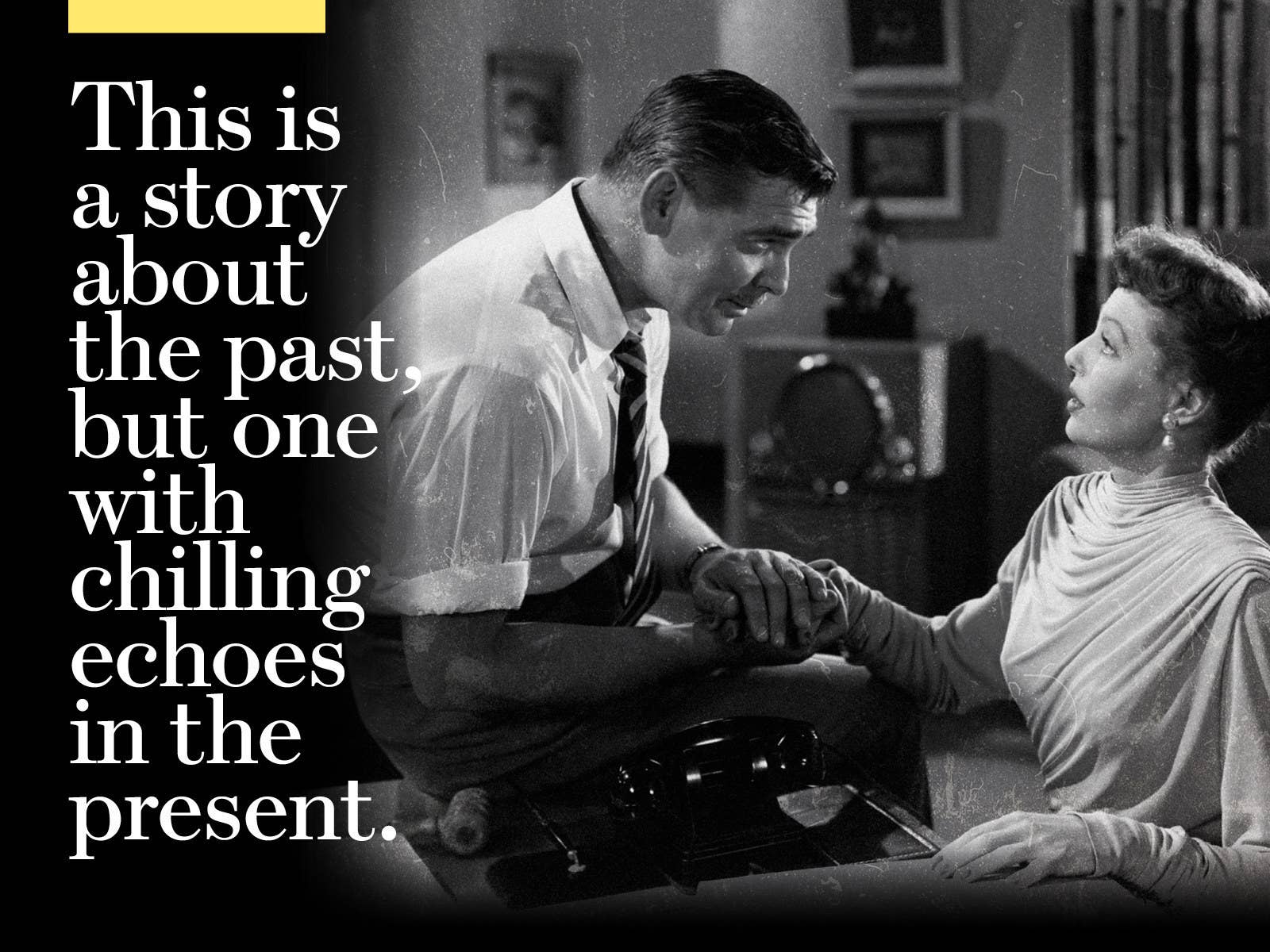
Young’s narrative was classic Classic Hollywood: She came to the pictures poor, from a working-class family, with no formal training. She first appeared onscreen at the age of 3, when she was still known by her birth name of Gretchen. She was cute and took instruction well, but the same was true of her other two sisters, who, like so many young kids in Hollywood during the silent era, made extra dimes by appearing as extras after school. Loretta didn’t distinguish herself until age 14, when, according to lore, a director telephoned to request her sister Polly, to which Gretchen replied, “Polly isn’t in, but why don’t you use me? I’m better looking and a better actress.” Silent star Colleen Moore became her mentor, giving her the name “Loretta”; in 1928, Young starred opposite Lon Chaney in Laugh, Clown, Laugh in what would become her breakout role — in part because, even at the age of 15, she was ethereally beautiful.
With two equally beautiful sisters, Young’s home became the go-to hangout for “some of the younger boys around Hollywood,” as one fan magazine reported. “One of the sisters was almost always to be at home when anyone called.” But this was no house of ill-repute: Young’s mother, Gladys, had converted to Catholicism, and was filled with the sort of religious vigor that entailed a convent education for each of the girls, weekly suppers with friendly priests, and a rigid code of conduct.
Which is why Loretta’s elopement, at the age of 17, with 28-year-old actor Grant Withers, fractured the family. It wasn’t that Loretta had absconded without her mother’s knowledge — at least not entirely. The sin was far more grave: Withers wasn’t Catholic. To punish Loretta, her mother refused to speak to her, and forced her sisters to do the same, even when one was serving as Loretta’s body double. Young quickly became disenchanted with her marriage and returned home — at which point a visiting priest, Father Ward, told her something that would guide Young’s decisions from that point forward. “I’ve already spoken with two 16-year-old girls, who each wanted to elope. They said, ‘If Loretta Young can do it, why can’t I?'”
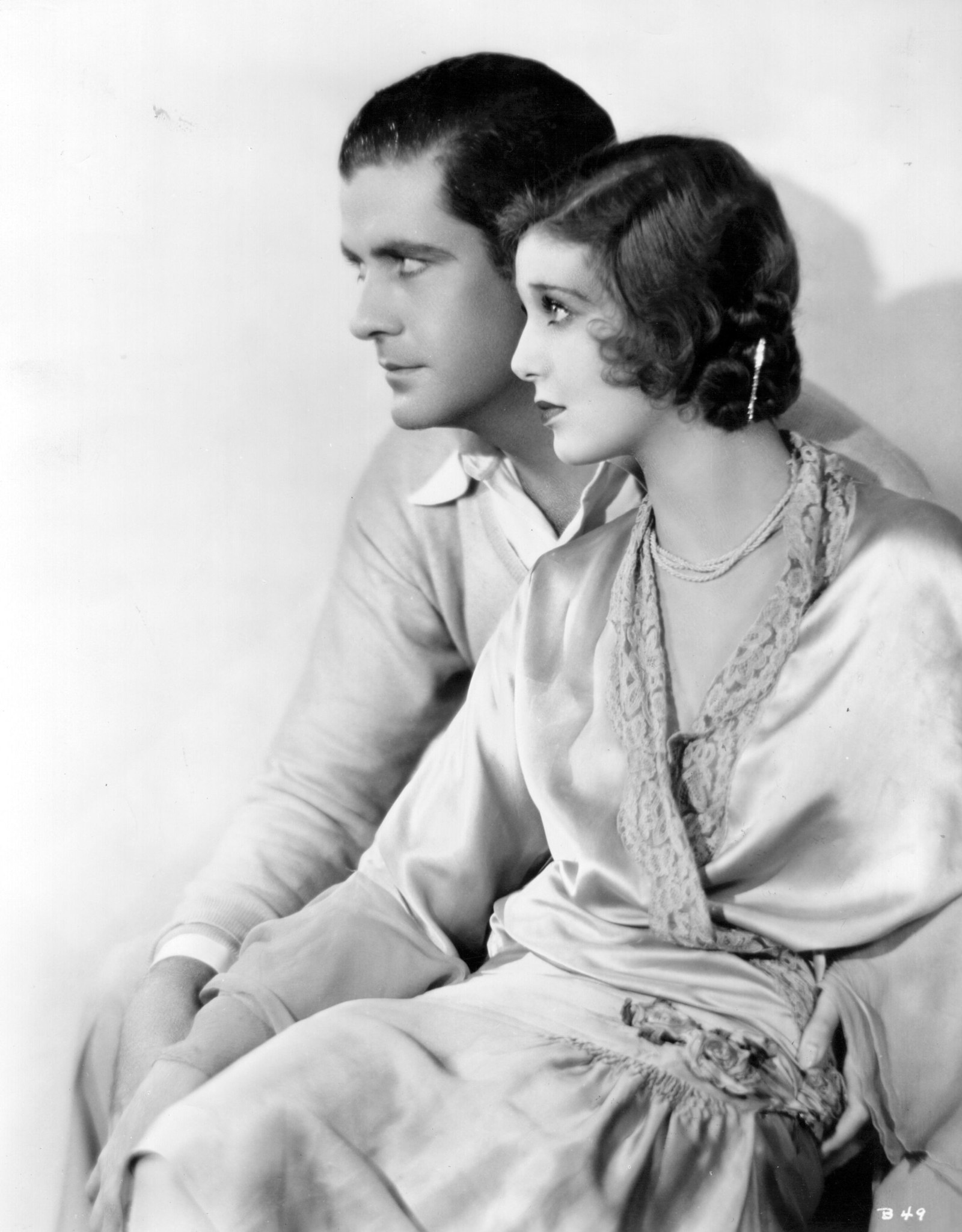
Ward concluded by paraphrasing Matthew 18:6: “Rather than give bad example, you should have a stone tied around your neck and be thrown into the sea... You have to decide, Loretta. Where are you going — heaven or hell?”
Her priest’s warnings and parental shunning affected Young deeply, but she was still a sucker for romance. She separated from Withers after less than a year and embarked on the beginning of her time as “The Gayest Divorcee,” as one headline put it. She was consistently framed as a woman of great beauty and greater emotion: “Currently she is out of love and hard to date,” Screenland reported in 1932. “She has moody weeks like these, occasionally, when she fancies herself the lonesome Garbo type. ... Then she’s falling in love again despite protestations that she never wanted to. She just can’t help it!” She fell for another actor; he married someone else. She fell for a businessman; he died during an operation. And then she fell for Spencer Tracy — a Catholic, but a Catholic married to another woman.
Tracy and Young met on the set of A Man’s Castle in 1933, when he was newly separated from his wife of 10 years. Both Tracy and his wife acknowledged the separation to the press, and Tracy appeared frequently with Young. It was a public courtship, but one that couldn’t come to a happy end, as Tracy, a Catholic, refused to divorce. He hung out at the Young family home — a point captured in home-movie footage taken with a camera that Tracy himself had given Young.
But for all their flirtation, Young remained chaste. You can see it in her goodbye letter to Tracy, which Tracy kept until his death; today, Linda and Chris keep a facsimile in their guesthouse, which doubles as a loosely organized Young archive, where her massive hat and glove collection seeps into endless stacks of glamour shots, posters, and family photos.
In the letter, Young’s words are coded but her intentions are clear. “When I’m with you, or listening to your voice, I seem to have little or no logic or common sense and certainly no resistance,” she wrote. But “unless I’m able at this time to see you and still live up to the promise I made five years ago” — “to never again under any circumstance ... Forget Him, to the extent of committing a sin” — it will be “impossible for us to see each other again unless we can truthfully and honestly be a good boy and a good girl.”
“It’s enough for me just to be able to look at you and talk with you,” Young continued, “and although this might sound stupid to say at this time I know I could do it if I even had a tiny bit of help from you, Spencer.”
Tracy, however, couldn’t keep up his end of the forever-chaste bargain. He and Young parted just as she was about to begin location shooting for Call of the Wild — a high-budget 20th Century film based on Jack London’s juvenile adventure of the same name. It was a loose adaptation, picking up on only one of the text’s plotlines, in which a prospector heads to Alaska looking for a gold mine, finds a woman in distress, rescues said woman, and allows a dog to steal the show.
It was a perfect role for Clark Gable, whose studio, MGM, was in the midst of renovating his image as a romantic “lover” into that of a hardened he-man. When Gable, the 22-year-old Young, and the rest of the crew left for Mount Baker, Washington, in January of 1935, Gable was a month from winning Best Actor for his turn in It Happened One Night. He was also a known womanizer, constantly at war with his second wife, who rebelled against his constant philandering, most notably with fellow MGM star Joan Crawford. Those relations, along with a purported drunk driving accident in 1934 that killed a pedestrian, were kept quiet by MGM’s legendary team of “fixers,” who helped shape the raw, and often scandalous, star material into sanitized images ready for public consumption.
Every studio had a set of fixers, including Young’s home studio of 20th Century. Yet apart from well-placed fan magazine articles around her divorce from Withers, she hadn’t needed their services: She was a flirt, but not a reckless one. Still, it was common practice for unmarried starlets to have chaperones — usually a friend or family member — when shooting on location. When the train left for Washington state, Young was accompanied by Frances “Fanny” Earle, a friend of one of her sisters. The plan was to shoot in the Mount Baker wilderness, about three hours’ drive from Seattle, for several weeks, but after the entire crew travelled 65 miles to the base camp, eight days of blizzard socked them in. With temperatures of 11 degrees below zero, even the film in the camera froze. When Young was doused in water for a scene, her teeth started chattering so hard that she began to cry uncontrollably. Co-star Jack Oakie sent the studio a tongue-in-cheek letter: “Am lost in deep snowdrifts. Send St. Bernard dog with keg of brandy. Will return dog.”
In the end, director William Wellman eked out a total of six days of shooting during the nearly nine weeks they spent on location. When Young and Gable weren’t sequestered in their quarters, they clowned around and flirted like mad — a flirtation Young herself caught on camera.
“Mom used to tell me that every performance involved falling a little bit in love with her co-star,” Linda Lewis explained, sitting in her Florida home and sorting through various Loretta keepsakes. By total coincidence, the 1945 Young film Along Came Jones was airing on Turner Classic Movies that morning, and Chris Lewis would periodically pause to point out a scene in which Young was beautiful, or wooden, or funny.
In location and isolated by snow, it made sense that feeling between the two co-stars amplified. Gable would call out, “Where’s my girl?” whenever he was looking for Young; Young openly loved attention and the exploitation thereof and believed, as she told Ed Funk years later, that so long as no boundaries were crossed, she wasn’t doing anything wrong.
Rumors traveled to Hollywood that Gable had made a conquest of yet another co-star, but Young was still heartbroken over Tracy. As she recalled in a 1950 article in Hollywood Magazine, “I was only a careless youngster at the time — spending most of the time at the window waiting for the messenger boy, on snowshoes, to bring the mail in which I thought there might be a letter from a lad in Los Angeles in whom I was deeply interested.” Later in life, she remained firm that for all her flirtation with Gable, nothing sexual took place between them — and the “paper thin walls that afforded only visual privacy” of their lodgings would certainly have made it difficult, if not impossible.
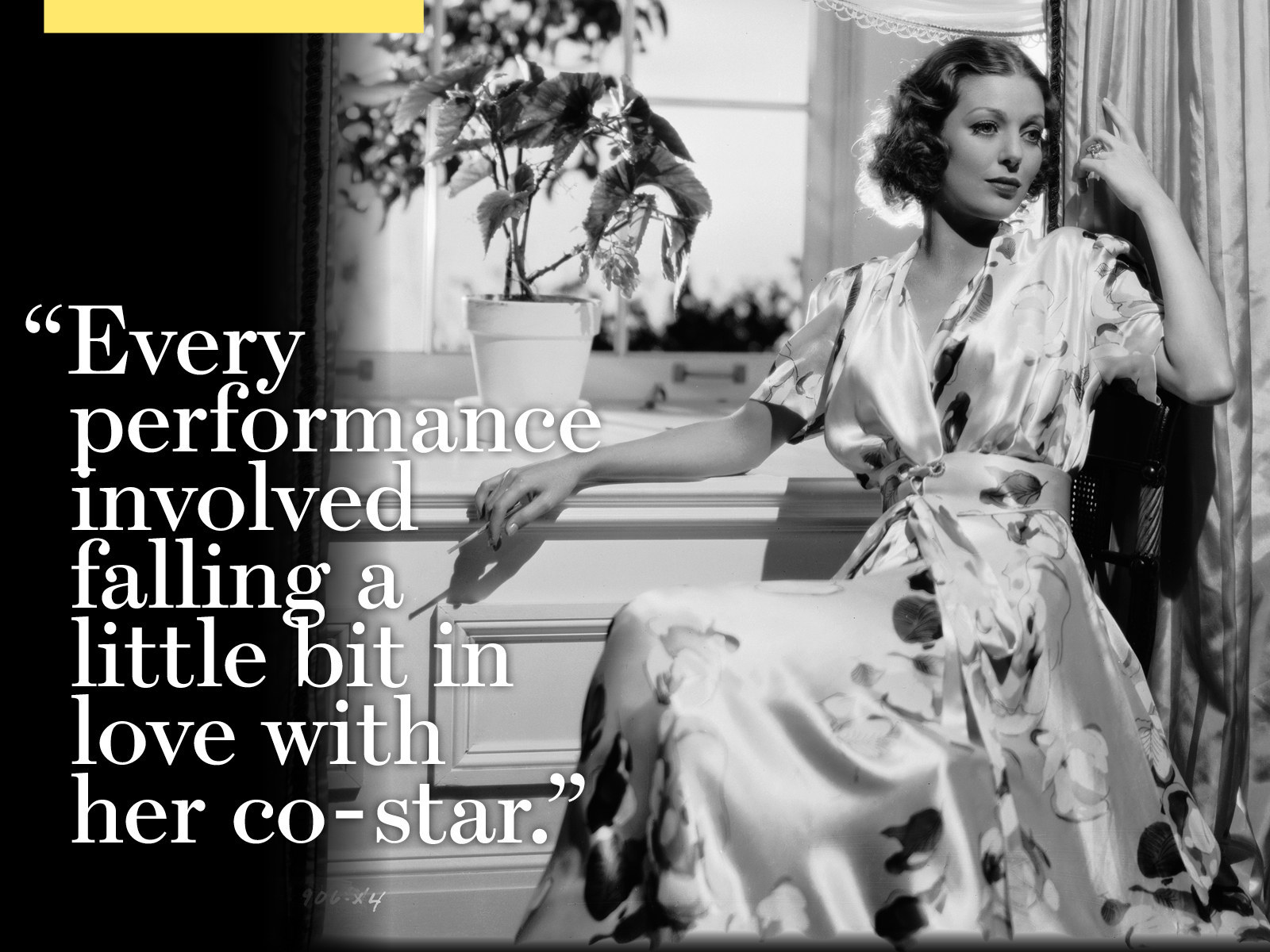
When 20th Century finally called the production home in February, Young thought their flirtation would come to a natural end. For the overnight train back to Hollywood, the stars were given individual sleeping compartments, while the crew, including Young’s companion, were seated and sleeping elsewhere on the train. At some point in the night, Gable entered Young’s compartment. Young never spoke of the specifics of what occurred to anyone — not to her sisters, mother, husbands, or children — until decades later.
In some ways, Young’s situation was impossibly unique. Yet it also recalls the millions of unwanted sexual encounters that entire generations of women did not talk about, in part because they couldn’t: They literally did not have the language to do so. The word “rape” was too extreme — something that happened to women in back alleys. The introduction of “date rape” into the vernacular gave a name for an experience that, to that point, had defied description, and thus reportage.
But back in 1935, Young had to deal with a train arriving at the station early in the morning — and her mother there to greet it. Once they arrived, Young did the only polite thing, and invited Gable to breakfast with her mother. Going about life as usual had and would continue to be Young’s primary coping mechanism. “She was so humiliated,” Linda told me, “and what she would do when she was humiliated was just ‘on with the show.’ Because she had been trained since the age of 3, you put a good face on it, and you go forward. She knew she’d have to continue working with him.”
Which is precisely what she did. Young and Gable filmed the remaining scenes for Call of the Wild on the 20th Century backlot, sustaining the rumors of Gable and Young’s involvement. A month after shooting wrapped, Gable’s wife, Ria, called Young with a plan: She was hosting a party, and if Young showed up, they’d shut down press speculation. But Young declined — not because she wanted the rumors to continue, but because she’d very recently deduced that she was pregnant.
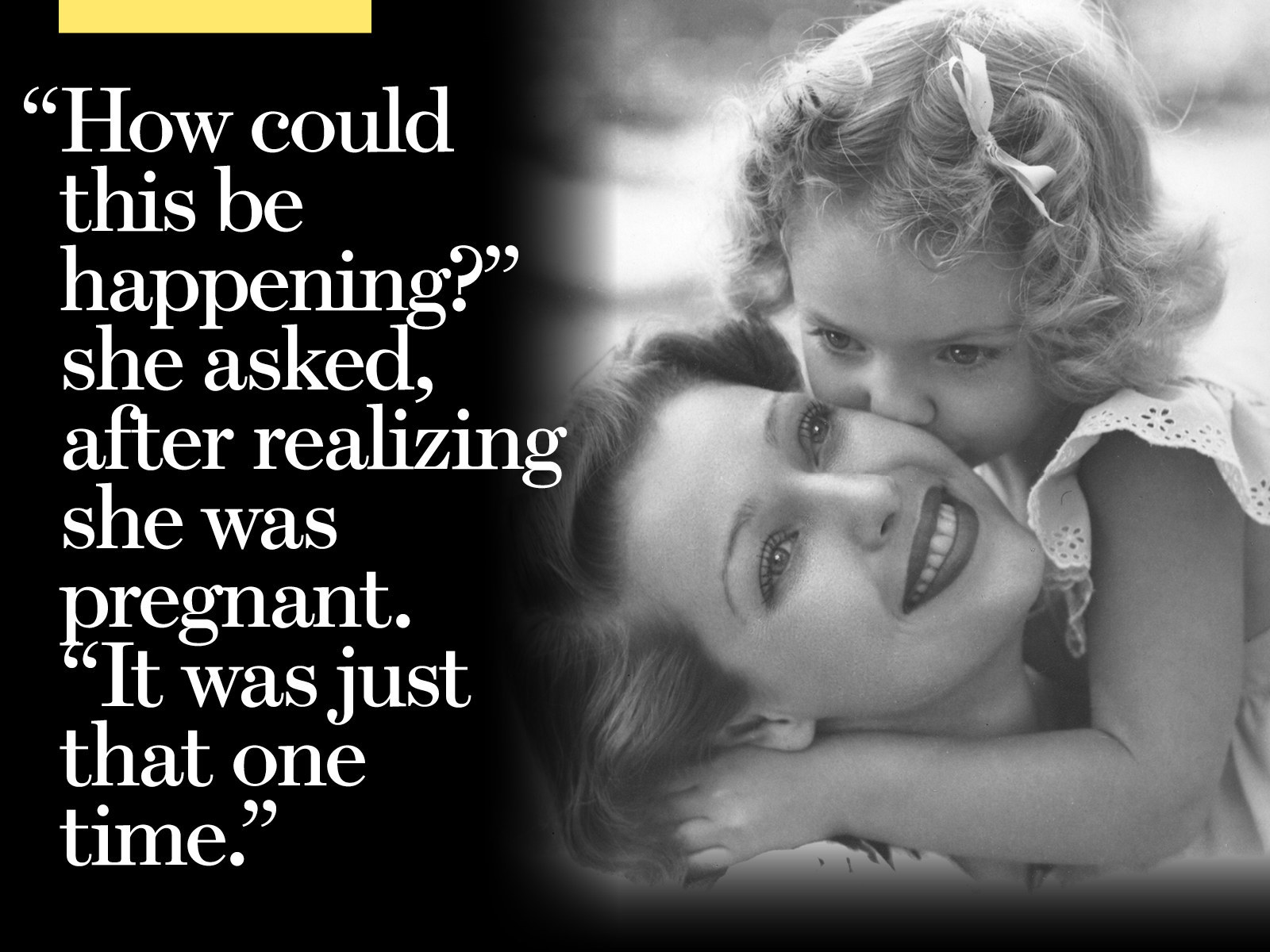
In the weeks before, one of Young’s sisters had walked by Loretta’s room and heard her weeping. “How could this be happening?” she asked. “It was just that one time.” In interviews with Ed Funk, Sally recalls telling her sister that her menstrual cycle might simply be off track, and suggested she get a massage to right its course. But Young’s period didn’t return, and the sisters resolved to tell their mother, who, after requisite tears, helped devise a plan. First, they confirmed the pregnancy with their family physician, Dr. Halloran, enlisting his secrecy and discretion for the birth, which would take place in November. Young had been on contract long enough to know that if she had told 20th Century about the pregnancy, chances were they would have arranged for a swift and secret abortion — which had or would soon happen to Jean Harlow, Kay Francis, and Judy Garland — but which Young considered a mortal sin.
So the family made plans to conceal the pregnancy on their own. First, Young would finish shooting two additional films, making public appearances throughout. On April 21, she was part of the wedding party for Hollywood director Tay Garnett; on May 6, she hosted a tea for the press in her backyard. Then, Young would publicly become very exhausted. A profile published in Movie Classic in June called her “the most tired little person in Hollywood” after months of working 18-hour days. Still, Young was careful to appear in public just enough so that no one could misconstrue her fatigue for pregnancy. Ed Sullivan, then a society columnist, detailed a whirlwind Manhattan weekend, and when Young and her mother, Gladys, set sail for Europe on June 29, that, too, was featured in the papers — as were reports of her active social calendar while abroad, hosted by prominent expats and countesses.
When they returned home on Aug. 21, Gladys told reporters that Young had been “in ill health for some time” and had recently lost considerable weight — the inverse of what had actually occurred. Dr. Halloran also made the all-important order for Young to “refrain from motion picture work for at least two months.” The illness itself was never disclosed, but that was common practice at the time, especially when the condition was of an “extremely delicate nature,” code for “gynecological.”
Back in Los Angeles, Young hid in a cottage located in a newly developed corner of Venice, far from the Hollywood crowd. Best friend Josie Wayne (wife to John) came to visit, throwing her arms around Young but never acknowledging the pregnancy — nor did Tracy, who stopped by while Young was swaddled in comforters and told her he loved her. Young eventually found herself so stir-crazy that her family would drive her, late at night, to culs-de-sac, just so she could walk about, and drive-in movies, where she’d be kept from sight.
For all their publicity maneuvering, rumors still swirled. Which is why, a month before the baby’s due date, the family arranged for a visit from prominent gossip columnist Dorothy Manners. Manners was given only 20 minutes with Young, who greeted her from the bed, a mountain of pillows strategically arranged.
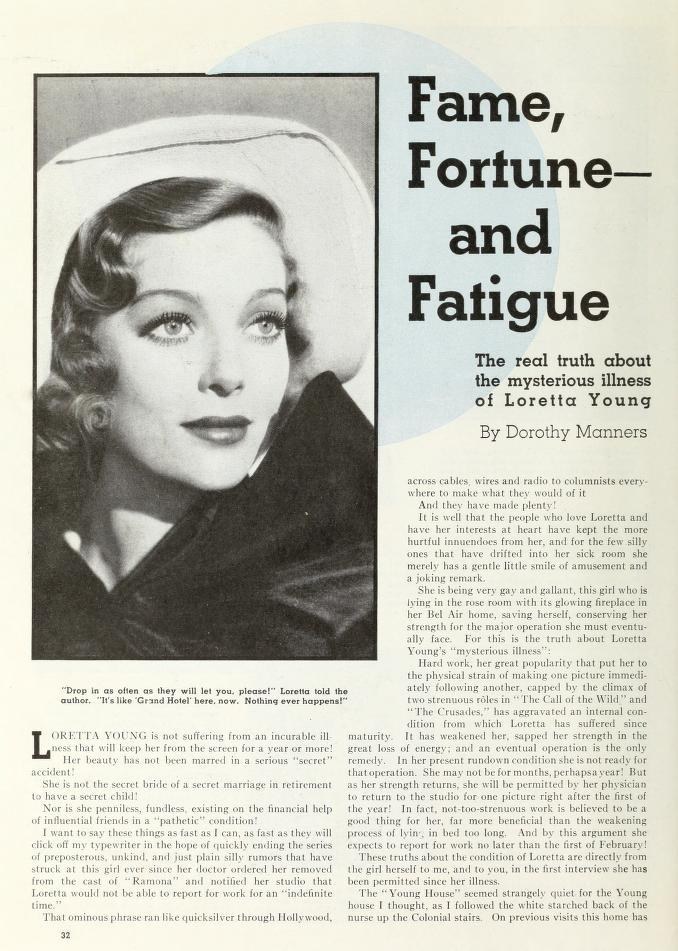
It’s unknown if Manners bought Young’s subterfuge or simply understood her own role in maintaining the publicity line, but the first paragraph of her piece served to disabuse all rumors save the one: “Loretta Young is not suffering from an incurable illness that will keep her from the screen for a year or more! Her beauty has not been marred in a secret ‘serious accident’! Nor is she penniless, existing on the financial help of influential friends in a ‘pathetic’ condition!’ I want to say these things as fast as I can, as fast as they will click off my typewriter in the hope of quickly ending the series of preposterous, unkind, and just plain silly rumors that have struck this girl ever since her doctor ordered her removed from the cast of ‘Ramona.’”
From her bed, Young painted herself as a woman on the mend: “I am slender and I look delicate, but I’m not,” she told Manners. While she was sad to miss her sister’s upcoming wedding, “I’ve still got my books, my thoughts, and my cigarettes.”
As the birth approached, the biggest concern was the milkman. Namely, whether or not he’d hear Young’s screams as she went into labor. Young’s mother and sisters worked together to soundproof the house, lining the windows with blankets and towels; when, on Nov. 6, 1935, her screams started, Dr. Halloron chloroformed her. A backup doctor and nurse, unaware of the identity of the woman giving birth in secret, idled in a car down the street while Young went into labor on her sister Sally’s massage table.
Young gave birth to a healthy baby girl, naming her Judy, after St. Jude — the patron saint, in Young’s words, “of difficult situations.” That afternoon, a telegram, sender still unknown, arrived for Clark Gable, in New York for the premiere of Mutiny on the Bounty: BEAUTIFUL, BLUE-EYED, BLOND BABY GIRL BORN, 8:15 THIS MORNING. Gable purportedly tore the telegram into pieces.
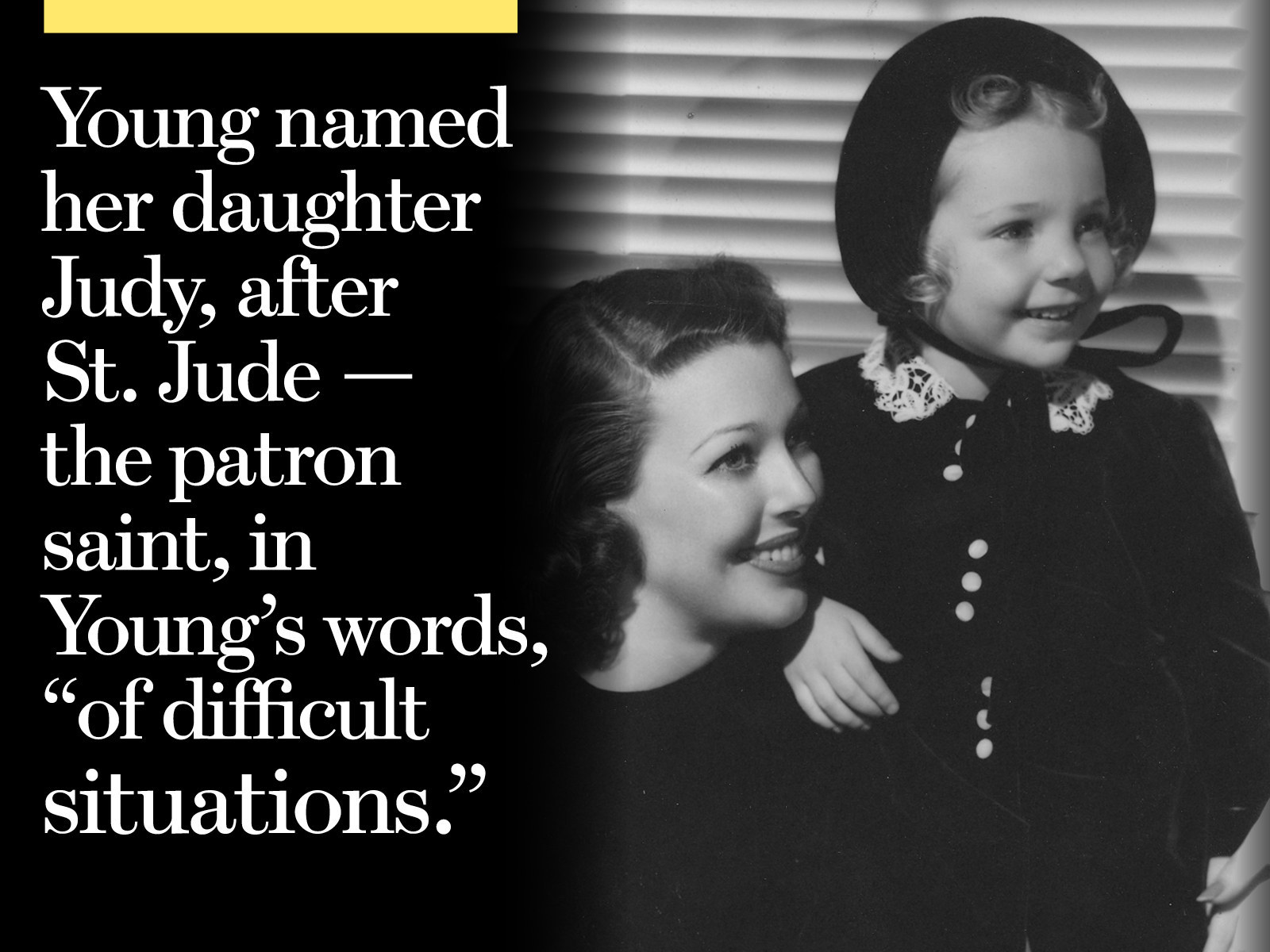
In the weeks to come, Young stayed in the Venice house with Judy and a nurse, Frenchie, who helped care for the baby. On Nov. 13, Hollaran filed a birth certificate for Judy, with the mother listed as “Margret [sic] Young,” who had been employed as an artist in the motion pictures for the last 10 years. The space for a father was left blank, a reflection of Young’s intention to keep Gable out of Young’s life. Four days later, Gable, who had been publicly linked with Young, socialite Mary Taylor, and actress Elizabeth Allen, denied relationships with all three: “all the rumors ... are all wrong, although I am very flattered.”
While Gable was denying his involvement, Young was preparing a very public return. On Nov. 22, the Sun newspaper ran a PR plant article, supposedly penned by Loretta, on “How to Be Beautiful”; on Nov. 30, she appeared in Screenland, in a full-length picture, with the headline “Loretta Recovers.” On New Year’s Eve, she attended a massive party at producer Samuel Goldwyn’s; by January, she was back at work, wrapping her aching breasts as they leaked milk, and loaned out to MGM for an upcoming film role — which meant working on the same studio lot as Gable, who grabbed fellow MGM star Spencer Tracy and decided to surprise Loretta on set. Young couldn’t look Tracy in the eye.
At first, Judy stayed in the Venice house with Frenchie, and Young visited when possible. When Frenchie approached the housekeeper with an offer to blackmail Loretta, the housekeeper alerted the family, launching them into high gear: Within days, they’d placed Judy in a Catholic orphanage until Loretta could feasibly adopt her without scandal.
That time came on June 10, 1937, when Young announced the adoption of two young girls via Louella Parsons' gossip column. Parsons was well-versed in the ways of innuendo: “Loretta Young, film star, admitted to me today she is a mother — by adoption.” She’d be adopting an older girl, age 4, and younger one, just 23 and a half months. “There is just one thing I can’t tell you,” Young told Parsons, “and that is where I got the children, and I want to forget as soon as possible that they are not mine.”
Nearly a month later, Young announced that a relative of the older girl had surfaced to claim her back — leaving Young with a single adopted baby girl, birthdate strategically altered, by the name of Judy.
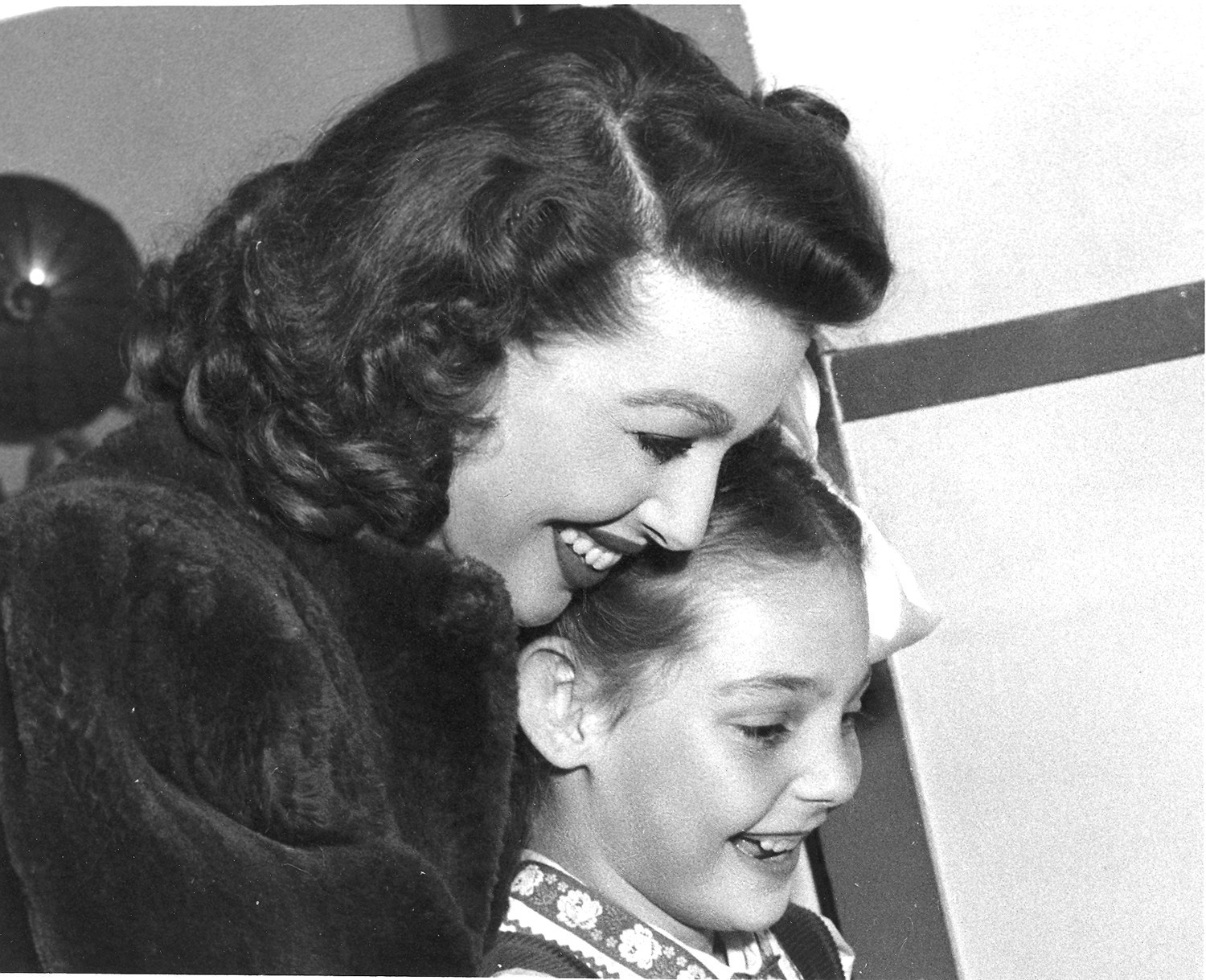
If rumors of an illicit pregnancy remained, the press didn’t cover them. Young’s popularity continued to grow, and gossip focused on her love life, the coverage of which struck the same tone as before Judy’s birth. “One word description of Loretta Young,” exclaimed the Washington Post, “AMOURESTHETIC.” She was linked with director Joe Mankiewicz, with actor David Niven, with co-star Tyrone Power. “But it is not to be taken seriously,” one gossip columnist wrote. “After all, Loretta is always reported romantically inclined towards her leading man. It is just a gag with her.”
But Young had also taken on the slightly moralizing tone that would only amplify as she aged — and against which her cover-up would be judged. When a young woman told her that men wouldn’t leave he alone, Young retorted, “Do you tempt them?” The young woman then asked Young about her time with Tracy, wondering if she had “dared be alone in a room with him.”
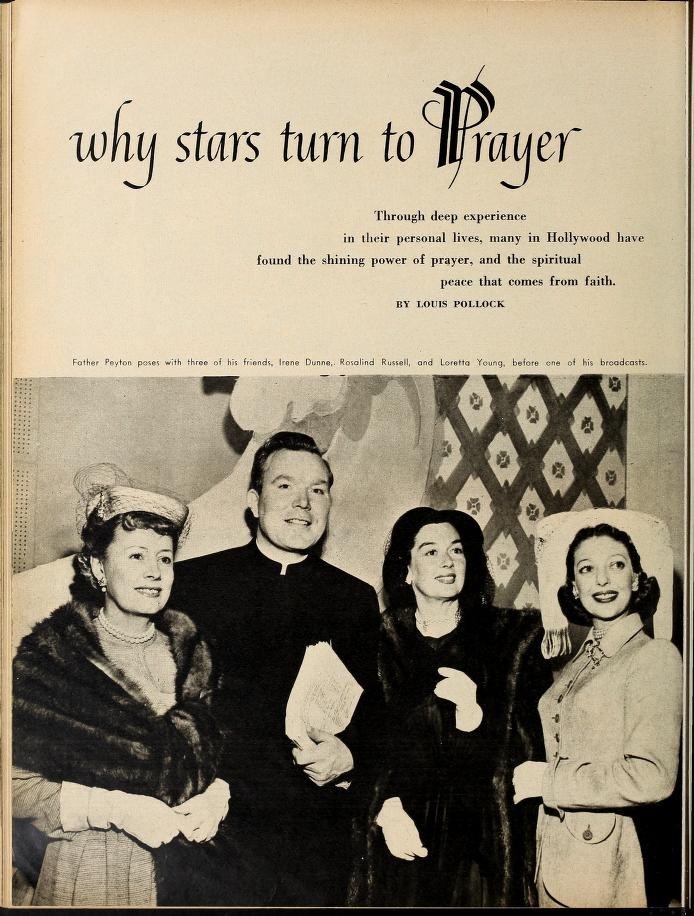
“Certainly," Young responded. "I’ve been alone in a room with him. I know what I’m doing all the time. Every woman does, if she wants to. Give some men half a chance or less, and they’ll make a pass at you. No man ever, as the quaint saying goes, ‘insulted’ me, unless I gave him some sort of opening.”
It’s moralizing, but in hindsight, it’s also a public form of self-shaming. In her mind, she was the only person responsible for the pregnancy. She invited Gable to visit the baby, which she recalls he did a single time (Judy claims it happened twice, but Chris and Linda believe she might have embellished for narrative effect). Young also opened a bank account where he could contribute to her care, but it remained empty. She shielded Judy from cameras, using bonnets to disguise her Dumbo ears that looked, rather obviously, like Clark Gable's; when Judy was 7, she underwent surgery to have them pinned back. An elaborate lie — but, in Young’s mind, a necessary one.
In 1940, Young met and married Tom Lewis, a handsome advertising executive. By 1945, she’d given birth to two sons, Chris and Peter; in 1948, she won Best Actress for acquiring a somewhat plausible Swedish accent in The Farmer’s Daughter. And the secret held: According to Chris, his father never explicitly addressed or questioned Judy’s parentage: “The night before they got married, she said, ‘Is there anything you want to ask me, anything that you want to know?' She was asking him, Do you want to know, and he said ‘No, no, I’m fine.’ They just agreed to not go down that path. It was simpler not to, and he loved Judy.”
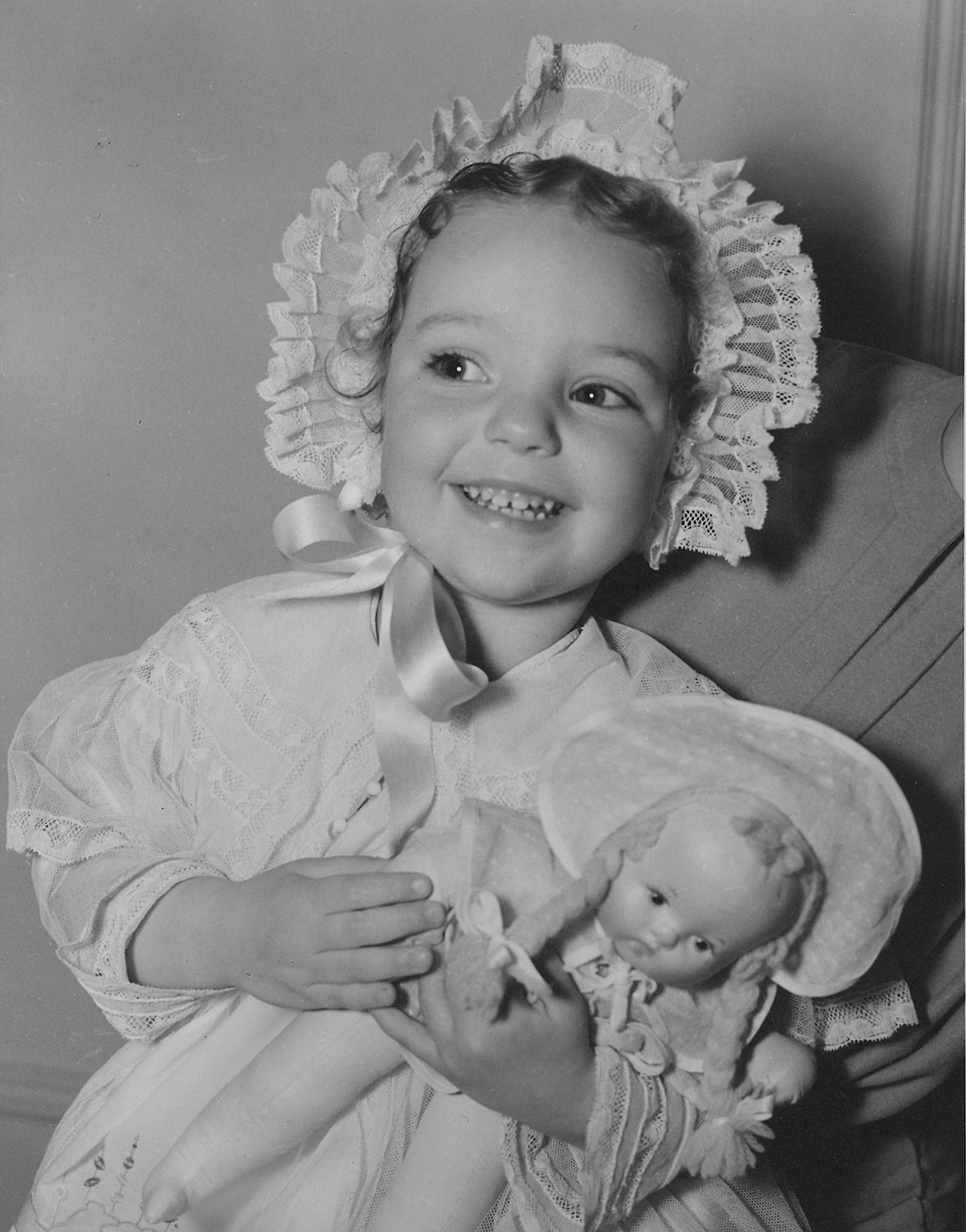
Gable, whose third marriage to Carole Lombard had ended in her tragic death in a plane crash, remarried in 1949, this time to Sylvia Ashley. The same year, Young and Gable were cast as romantic leads in Keys to the City. MGM had been struggling for a hit in the postwar decline of the studio system, and a member of its old stable of stars seemed the surest bet — especially if paired with an old love interest. When studio head Dore Schary, a longtime friend of Young’s, asked if she’d play the role, Young surprisingly accepted — perhaps out of duty to Schary or, more likely, as yet another savvy publicity move: No one would think that the rumored mother of his child would agree to star as his romantic interest.
Production went smoothly up until Aug. 10, when Young, filming a scene that required the generation of smoke, collapsed on set. Gable carried her to her dressing room, and the press reported it was simply complications from a pregnancy that hadn’t yet been made public. Fifteen days later, however, Young miscarried the baby. Still, she finished the film — and hosted the premiere party at her home, which Gable attended and where he would be introduced, however cursorily, to Young’s children, Judy included.
Young performed requisite publicity for the film’s release, and an article published under her byline spent paragraphs recalling her time on the set of Call of the Wild, going on to highlight just how little she’d seen of Gable in the years since: “I know this will seem odd to people in other parts of the country, but the fact is that distances in Southern California are great. ... The result has been that our only exchanges through the years have been a mutually-tossed greeting across a crowded room at a big party.”
And so Loretta’s life moved on: Home videos show her vacationing in Sun Valley with various Hollywood families, her family of five traveling, with matching outfits for the boys, to Hawaii. With Tom Lewis’ advertising expertise, it was easy to package a television show, named for Loretta herself, that would become a mainstay of '50s television. She became steadily more public and more moralizing, a devoted and public Catholic who spoke freely about her faith and commitment to various Catholic charities, especially orphanages and “women’s aid” associations like St. Anne’s.
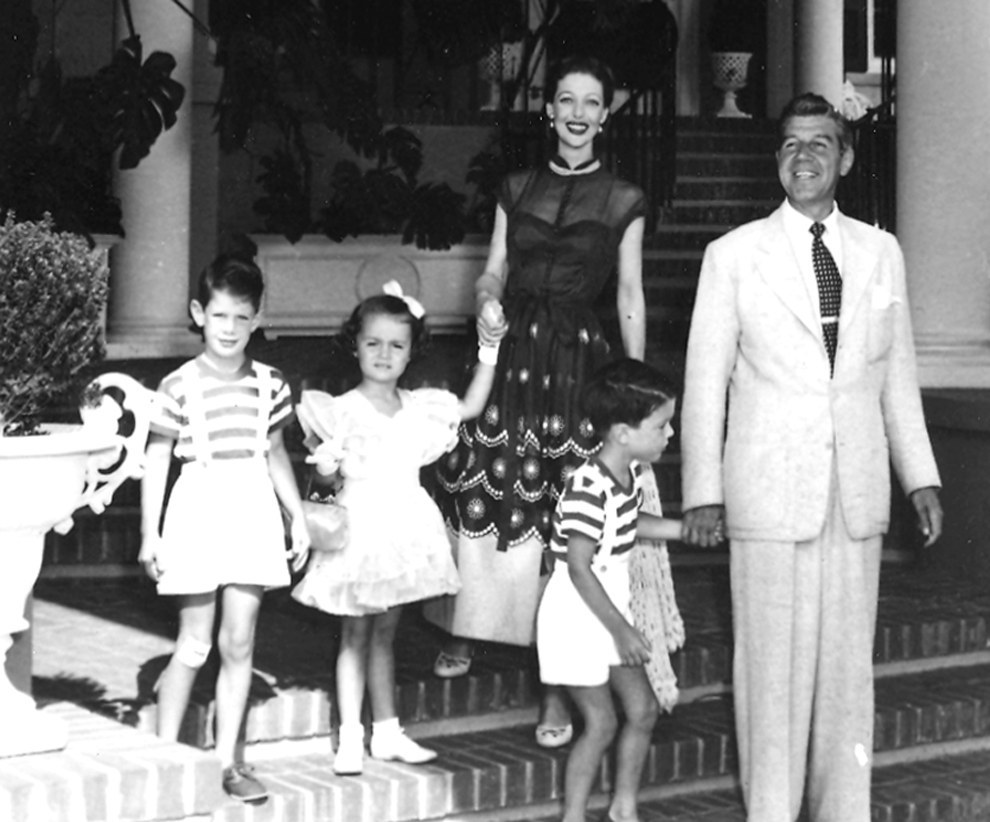
Judy wouldn’t learn about Gable until 1958 when, at age 23, she told her fiancé, Joe Tinney, that she couldn’t marry him: “I don’t know anything about myself. You know everything about yourself and I don’t know anything about me.” Tinney’s response, accumulated from years of overheard conversations and innuendo: “You’re wrong. I know everything about you. ... Your father is Clark Gable.”
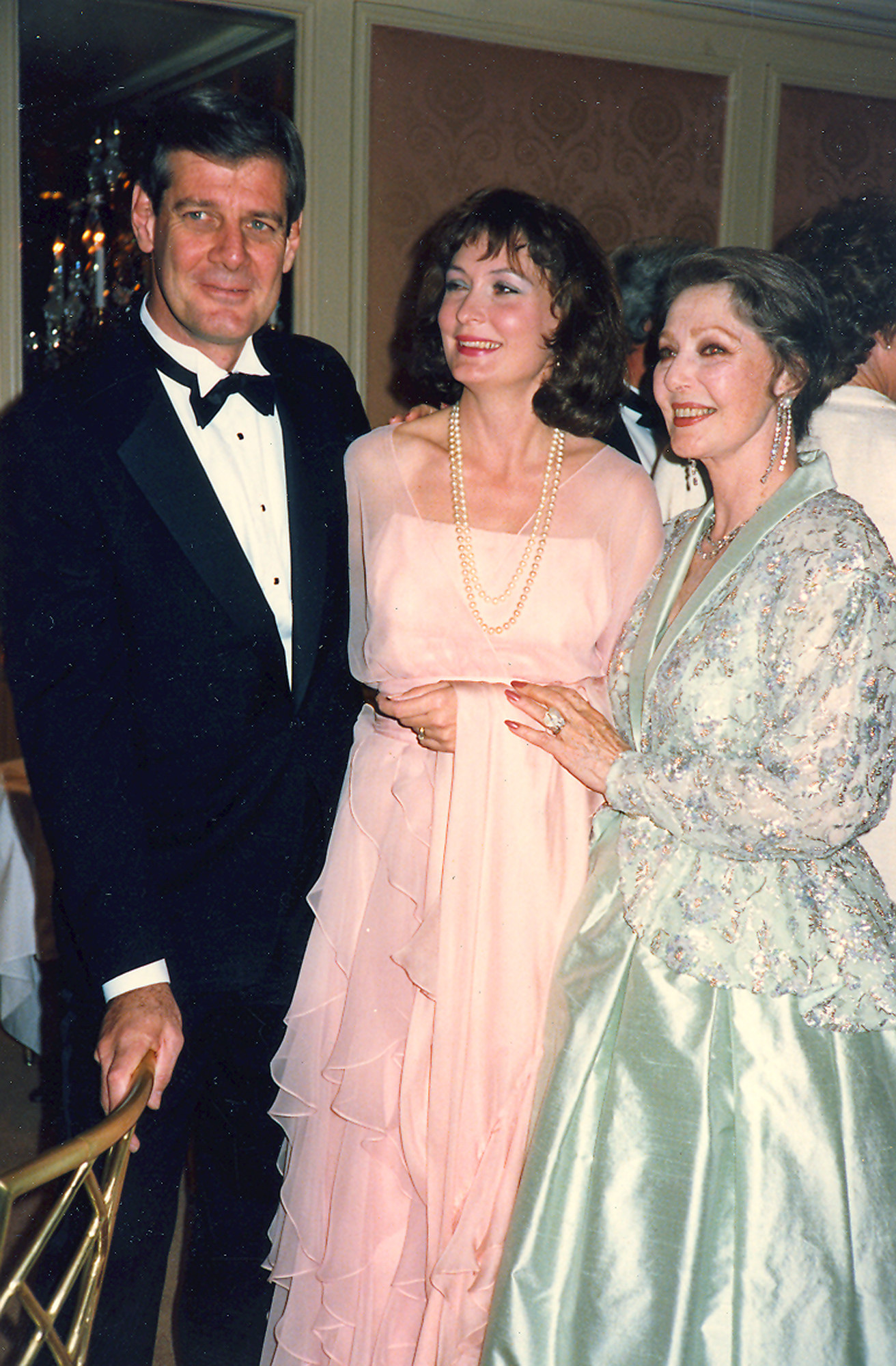
This exchange was made public in Judy’s 1994 memoir, Uncommon Knowledge, which was published after years of estrangement from Young. According to Judy’s brother Chris, their relationship disintegrated after a Mother’s Day family gathering when Judy demanded that her mother tell her the truth — a request that prompted Young to retreat to her room and vomit. Uncommon Knowledge paints a sympathetic portrait of Gable, (who had died, at the age of 59, in 1960) while interrogating her mother’s choices: As she writes on the first page of the book, “My life has been filled with hypocrisy and deception from the moment I was born.”
The allegations of hypocrisy became the through line of her legacy. Even today — in Frank Langella’s recent memoir, on the celebrity gossip site Oh No They Didn’t, or my own piece on Gable, published four years ago, Young is understood as a woman who didn’t live by her own set of publicly propagated values: a sinning saint.
Yet as Linda explained, “With Judy, she was trapped. She had this lie and no way to frame it. She took full responsibility for hiding it all her life. To be stuck — so caught, in such a public way. What could she have done with that?”
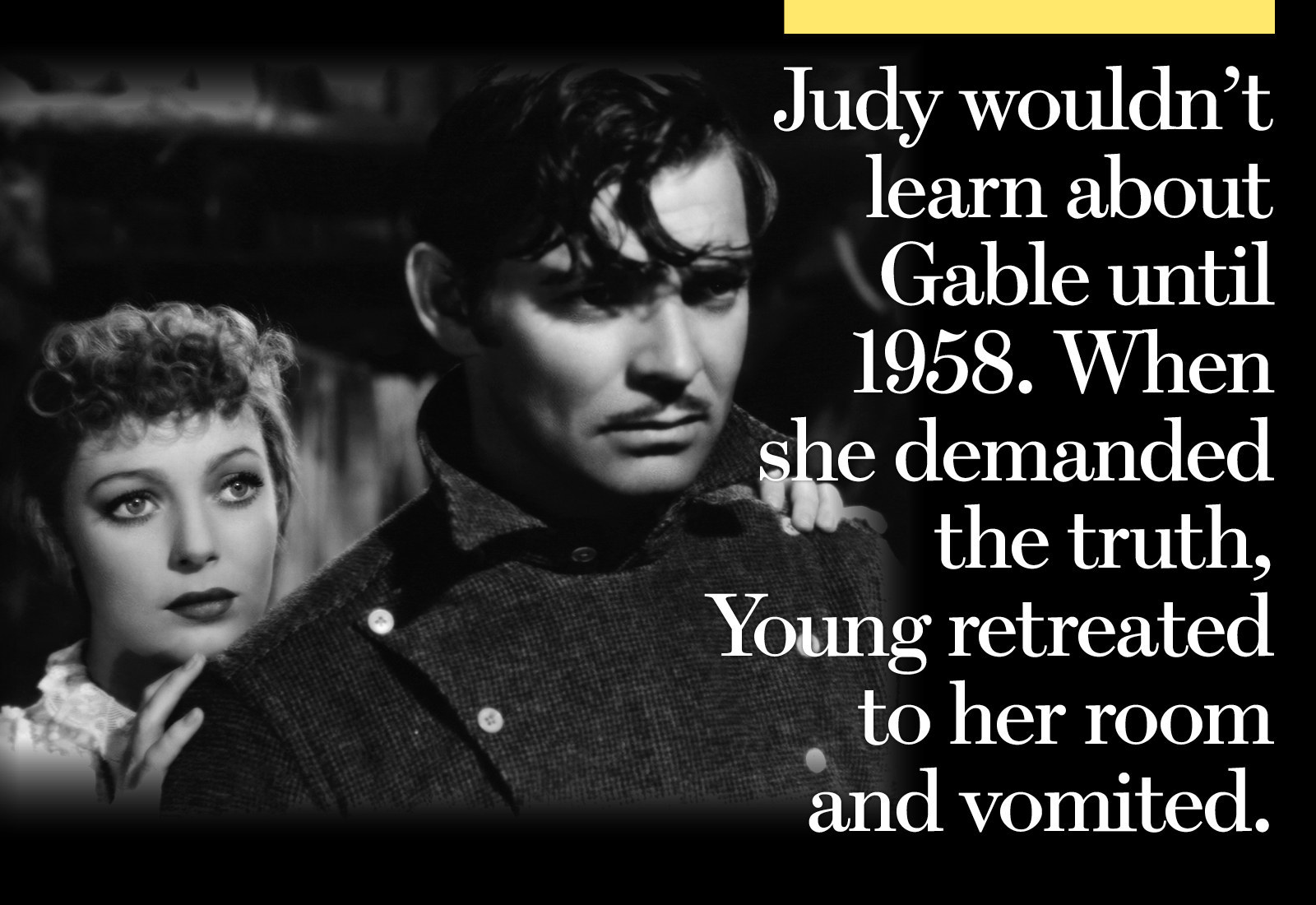
It was in 1998 — in the wake of Judy’s memoir — that Young, by then in her eighties, first heard the term “date rape” on Larry King Live, at home in Palm Springs with Ed Funk. “She asked me what that meant and I explained to the best of my ability,” Funk told me. The next night, Linda was over for dinner, and Young brought up the term again, asking for further explanation. Linda recalls telling Young that it was “basically when you’re with someone that you trust, or literally on a date with them, and you’re not compliant, or you’re saying no, and they’re not listening. And they either can’t hear it or believe the old myth of ‘Oh, you really want that.' I said, ‘It doesn’t have to be violent, it doesn’t have to be rip-your-clothes-off. It’s when your no isn’t no.'”
“And there was this whole dawning,” Linda said, with the sound of Young’s voice, still on TCM, in the background, mixed in with the slow patter of the end of a Florida thunderstorm. “Like, suddenly there’s a category that this thing that happened to her fits. And she was a good actress, but this was not fake. She said, ‘That — that’s what happened to me.’ We talked about it, and it didn’t make her angry at him, it just gave her a new frame that I think lifted a lot of her guilt.”
Young and Judy were in the earliest stages of mending their relationship, however, and Young didn’t want to reopen the rift. “Later, she said, ‘Well, you know, this wouldn’t help Judy,'” Linda told me. Over the next few years, it became clear that Ed Funk’s long-germinating biography would not come to pass, and Young agreed to work with Joan Wester Anderson on a memoir that would be published after her death — and in which she would publicly confirm, for the first time, that Judy was indeed her and Gable’s daughter.
Young died on Aug. 12, 2000, at age 87. The year before, she’d been photographed for Vanity Fair, still resplendent in beauty, with a caption that read, “She elected not to talk about whether or not her daughter was the child of Clark Gable, with whom she made The Call of the Wild in 1935. For that, much honor.”
Included in her obituary was a quote from Ed’s unpublished biography: “My appeal wouldn’t have been to the intellectuals or the neurotics. Nor to the shop girls and secretaries — that would have been Joan Crawford’s market. But there was an awful lot of women out there who were like me — who were willing to play by the rules, didn’t sleep around, and were very aggressive. A Loretta Young movie had a happy ending; that’s what it was geared to: a nice husband, nice lover, no abuse of any kind — that’s what the heroes and heroines were in those days.”
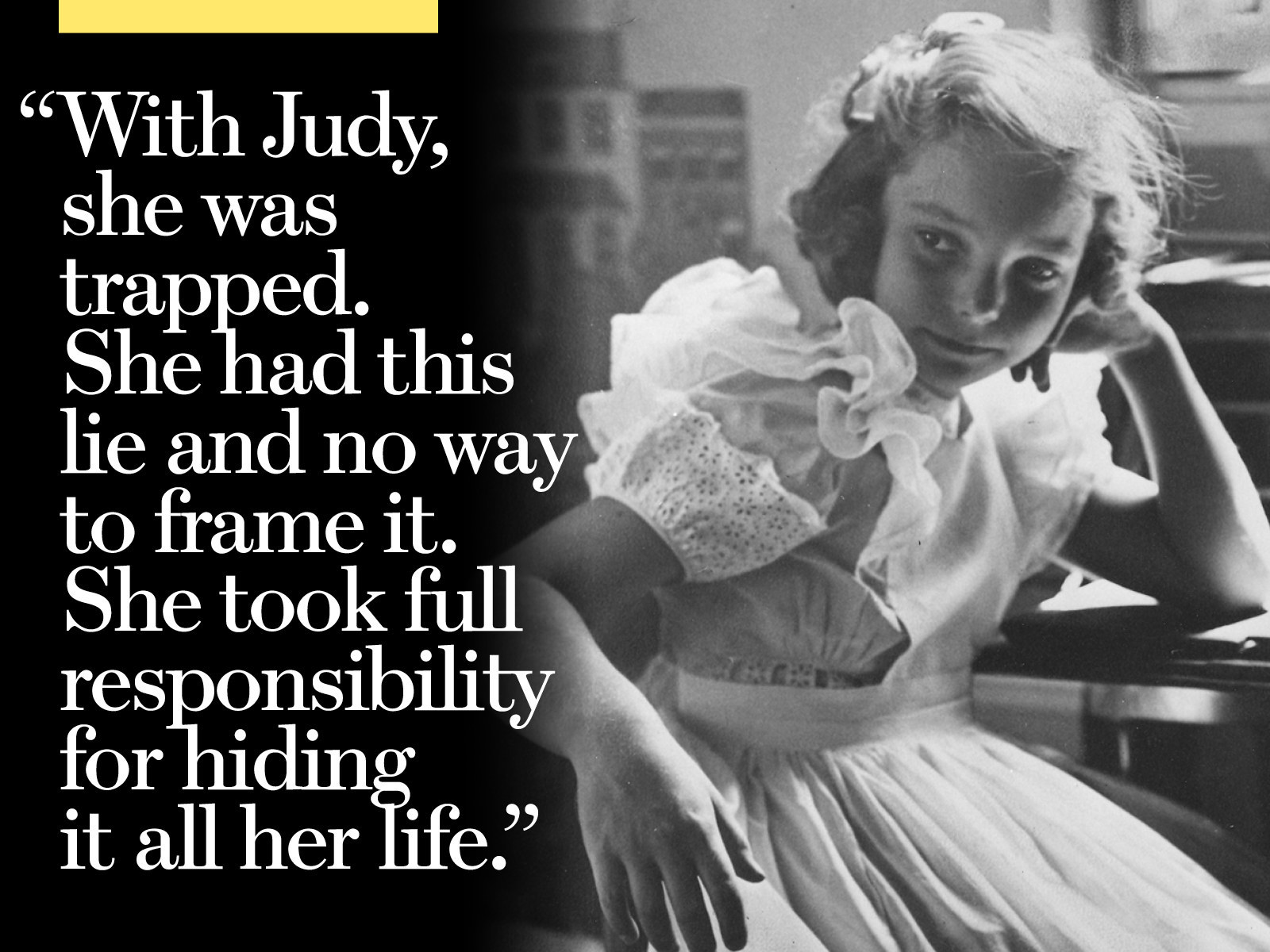
That hope — for a happy ending, for herself as heroine — was what had kept Young quiet for so many years, and would keep her children quiet as well. But in 2011, Judy, then 78, succumbed to lymphoma. “Six months later, something went click,” Linda said, nursing a glass of pinot grigio at one of countless surf ’n’ turf grills that line the east Florida coast. “Judy is not here to be hurt by this. And that’s what Loretta really wanted to avoid — because who doesn’t want to be conceived in love?”
Linda paused, looked down at the table, figuring out how to phrase her motivation. “But then I realized that it’s almost every day, all these rapes, and the men just keep getting away with it," she trailed off.
According to Funk, Young, like so many from her generation, conceived of her role in “the game of sexes” as “the guy tries to get what she wants; the woman’s job is to fight him off.” The inability to fend off Gable’s advances constituted a failure on her part — not Gable’s. She spent the rest of her life trying to compensate for that failure, believing that the guilt was hers and hers alone.
For years, Linda and Chris remained undecided about whether or not to speak about what happened to Loretta. The night on the train took place eight decades ago; neither Young nor Gable are alive to speak for themselves.
“When you’re the keeper of this information, it’s a terrifying story to tell for the first time,” Linda said, trying to steady the wobble in her voice. “It’s so dramatic. The onus is on us to prove it, but you can’t prove it. It’s 'he said, she said.' But that doesn’t mean we shouldn’t tell the story.”
